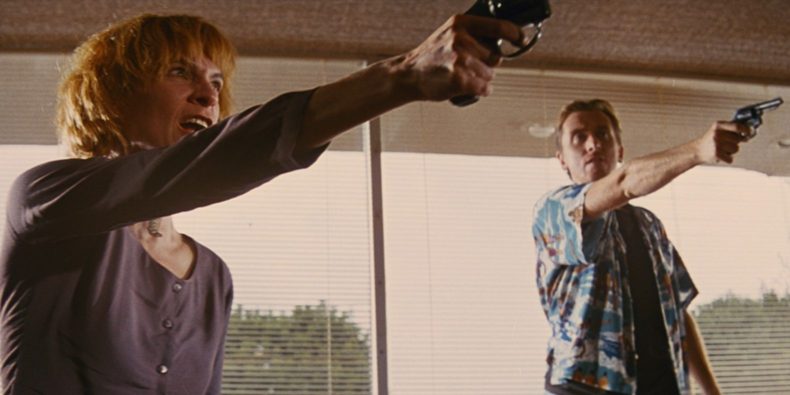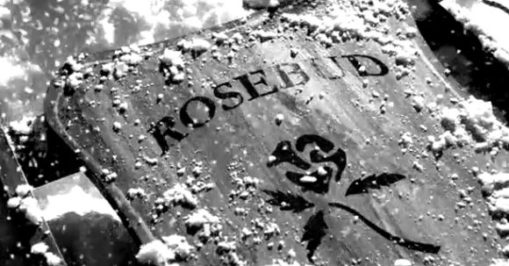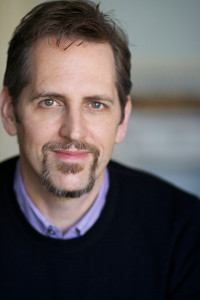I find framing devices to be overused in the scripts that I read. More often than not, one of my first notes to a writer is that their opening scene isn’t helping. I’m talking about a certain kind of opening we’ve all seen many times. It typically takes place in a later time frame than what follows right after. It’s meant to tease the reader with something “big” or intriguing that isn’t explained or resolved right away.
So what makes them go wrong? Sometimes this opening is mysterious to the point where readers will have no idea what’s going on in it. Or maybe it doesn’t connect at all to much that follows, for a very long time. Often it just doesn’t present a dramatic enough situation to make the audience strongly desire to find out how we got there.
Framing devices “frame” a story by opening and then closing (often) with something outside the time frame of the rest of the movie. Like the graveside material in Saving Private Ryan. Or in some stories we work our way back up to that opening event somewhere midway through the script.
Their use dates all the way back to Citizen Kane (probably further) with the classic opening of Charles Foster Kane dying and saying “Rosebud,” and then a reporter being assigned to figure out what that meant. This leads to him reconstructing Kane’s life from the beginning as a compelling investigation plot. In this case, the framing device asks an important question that the audience is intrigued by, and the script immediately follows up on that by making it the linchpin of the story.
What I often see instead is a first scene where the reader will have much less of idea about what’s going on in it, and the scenes that come after seem to be from a completely different movie (or pilot), where nobody’s talking about or aware of what happened in the opening scene and the characters in it aren’t featured at all after it. These tend to fall flat because, although they raise questions (like “what was that all about?”) they aren’t compelling story questions that readers really care to see answered.
Another opening of a movie that might come to mind is Pulp Fiction, which begins with Honey Bunny and Pumpkin in the diner, and doesn’t come back to them until the very end of the movie. That script cuts away from this framing device to completely different characters and story that seem to have no connection to that opening, and doesn’t return to these two until much much later. So does this prove that you can get away with something seemingly unrelated to open a script?
Nice try. 🙂
I would say “no,” most of the time, and here’s why:
1. This framing device takes the time to get us up to speed with these two people. It’s not so quick and mysterious that we have no idea what we’re seeing or who these characters are.
2. It’s used to establish a certain kind of mood for the film — with Tarantino’s flair for long dialogue scenes of a certain kind that get punctuated with violence.
3. It’s a film with multiple stories in it, and this introduces one of several. (Although we may not know that yet.)
4. Perhaps most importantly, it ends with them standing up, pulling out guns, and yelling that this is a robbery. A clearly compelling way to end, where the audience really wants to see what happens next.
That’s really the biggest point I want to make. Framing devices can work if they somehow get the audience strongly emotionally invested in wanting to understand something better or see how we got there, or especially how what happened in them is going to turn out. But that requires a certain level of understanding about what they’re watching, who the people are in it, what’s happening, and why they should care. They have to be able to get inside the scene on a human emotional level, relate to someone or something, and feel like this matters. There can be some mystery to it, but if they’re just scratching their heads at the end of it, not sure what they’ve seen or who these people are in it, and aren’t strongly intrigued, you’ve got a problem.

The overuse of framing devices comes, I think, from writers’ very real concern that their opening pages have to grab the reader right away, because the script might get put down by professionals in the first ten pages if they aren’t strongly drawn in. And that’s true. But the fallacy here is thinking that a framing device with higher stakes, action and mystery (which they often have, compared to what comes after) will fix that problem and not create other ones.
To my mind, the worst thing you can do is confuse and distance the reader in the opening pages with something unexplained that isn’t super compelling and doesn’t draw them in emotionally. It’s much better to just begin in a more linear chronological way, at the beginning of the story. Maybe you do an opening prologue, which is kind of the opposite in that it’s an event or events from the past. With some stories that’s helpful, as I’ve blogged about before.
Most of the time when I see a framing device in a script, I feel it doesn’t achieve what I’ve outlined above, and my advice is to lose it and start with the first scenes that happen in the “present” chronology. The key is to write those scenes in a way that makes the reader feel like they’re vividly part of an entertaining world, and getting to know at least one character they start to become invested in, who has a life filled with conflict, problems, and/or intrigue of one kind or another.
This is hard to do well but is essential in the opening pages, and often a framing device just reduces the amount of script real estate available to hook the audience with the main character’s status quo life before the catalyst/inciting incident. And to my mind, that’s really where the first ten pages of a script live or die — in how well they engage the reader with that material, and not the artificial placement of some scene from the future completely out of context to open the movie.
Yes framing devices can sometimes work. But my suggestion would be to open the movie compellingly without one. If you have one that meets the above criteria, you can always add it later. But ideally readers are going to passionately desire to keep reading because of the great writing of even the “present day” beginning scenes, either way.



But what about the need to establish the genre at the beginning? Example: the movie THEY/THEM starts with a sequence that isn’t explained until the end and seems disconnected to what happens in the rest of the first act. But without that teaser opening, the viewer might think for a long time they are watching a drama about kids at a summer camp rather than a horror movie. Of course, that teaser is chronologically in line with the rest of the story, just not connected to the main characters who show up in the following scenes.
Thanks for the comment Deanne! I haven’t seen THEY/THEM so it’s hard to comment with specificity.
I do feel genre should be established in the first act, so if it’s horror, give the audience some sense of that which is clear.
And there are instances where framing devices work — especially if they really grab and intrigue the audience enough to make them invested in knowing more about how we got there.
Hear, hear. I think I commented on a post of yours a while back to this same effect. The overuse of this kind of framing has largely killed any dramatic effectiveness it ever had. I can still enjoy it if it’s done in an interesting, entertaining way, but it truly has to soar. The bar is vastly higher these days because of its mostly ineffective ubiquity over the past 25 years.
I personally prefer linear storytelling if only because it does allow the accretion of audience connection to the characters that ultimately is what matters most the viewer sticking with the story. Clever ≠ caring. Conveying does, and that comes with time well spent more than anything else.
What do you think of the way The Irishman was framed? First with the elderly Frank Sheeran in the nursing home then with him and his wife on the road to a wedding with Russell Buffalino and his wife, a journey which is returned to now and again throughout the story. It’s almost like a double frame which I find convoluted and perhaps spoils an otherwise great film (even if it is ridiculously long!).
Amen. You shouldn’t have to pray you’ll understand later what the
heck some bizarre scene meant. You’re already watching in hope a
film’s meaning will clear up quickly without inducing a headache.
Some exceptions of course. The opener for Saving Private Ryan –
poignant, easy to follow, no pyrotechnics, gently unobtrusive –
is ‘ok’ IMO.
Going non-linear in the other chronological direction seems to be
going out of vogue though. I see frequent tsk-tsk’ing about the use
of flashbacks too. They can be and oft are problematic for valid
reasons. But again there are exceptions.
Good insight! I get really tired of framing devices these days. Just tell me the story and build to the climax.
I’m with you, Kaarin. Don’t try to impress the audience or grab their attention. Stick to the structure and let the frame be just that – something to build on – an image that establishes the time, place, and people we’re going to spend the next 2 or so hours with. I just analyzed the utter flawless Shawshank Redemption. The opening image of Andy sitting in the car anchored a theme of freedom vs. enslavement/imprisonment. That theme got carried out in more than 50% of each subsequent scene – until pow! There we (the audience) were – crawling through the sewage tunnel to find our dream – the Pacific coast of Mexico with the greatest tool man has – hope! The juxtaposing images opened and closed the story in a way that made sense, and we need that. After all, one of our main goals is to be MEANINGFUL, and these opening and final images provided the logic needed to manifest cognitive and spiritual meaning.